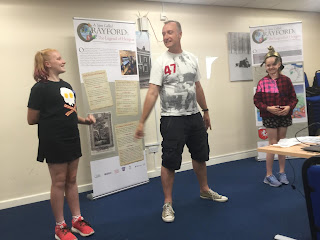SummerFilm Project: Hengest and Horsa's journey - Oscar Hudson
We started at St Paulinus and looked at where the church is situated - on Mount Nod.
We then went down to the River Cray and thought about how the area would look if it was still Saxon times. We used kennings to describe some features around us and then read these as a poem. ( which is on the video post)
Then we visited The Faesten Dic, which is a defense system used, some suggest, by either the Britons or the Saxons at the Battle of Crayford. It is a ditch dug into a hillside which some believed made it very tiring for the attackers so they were in a worse condition for the fight.
There was also a competition to see who could find the oldest tree. It is believed that if you measure the circumference of the tree in inches then that is the age. The girls won😞.
We played a game which showed us how the Faesten Dic was a good place to hide from the enemy. One person had to count and everyone had to hide, then the counter had to spot people. If they couldn't the process was repeated until someone made it back to the counter.

We then visited two Burial sites. The first, Kit's Coty, is where Catigon is believed to be buried. The second, The White Horse Stone, is where Horsa is believed to be buried. Here the children were tasked with making a dramatical sketch based around the stone.



























Comments
Post a Comment